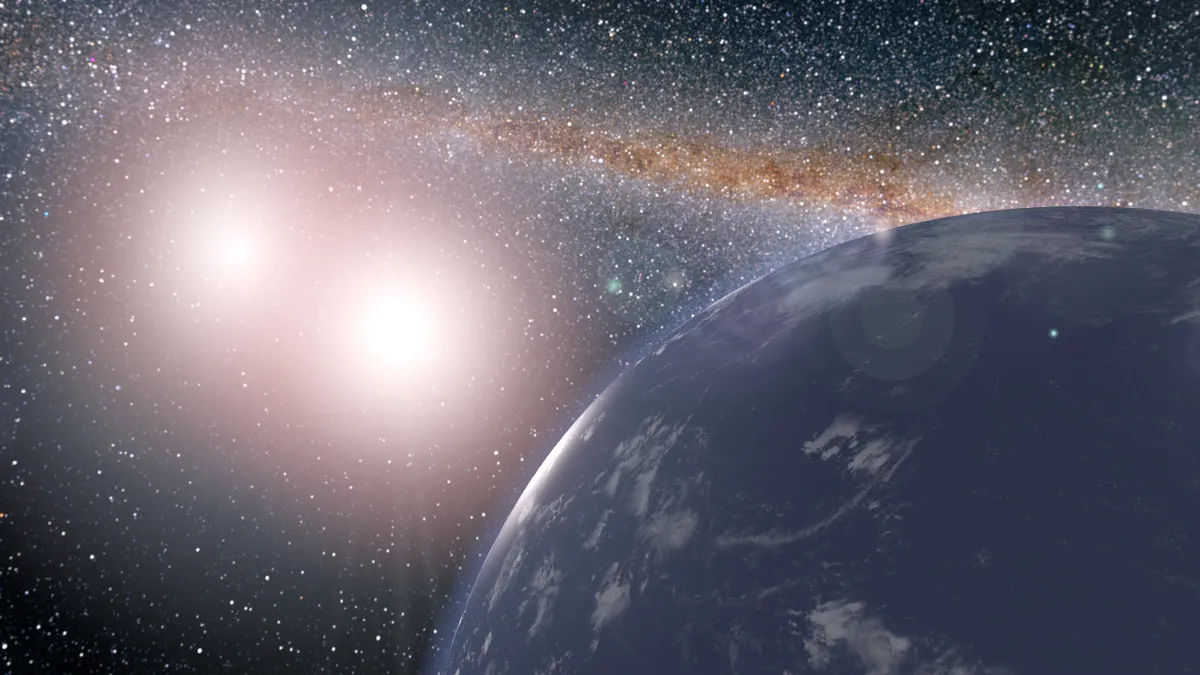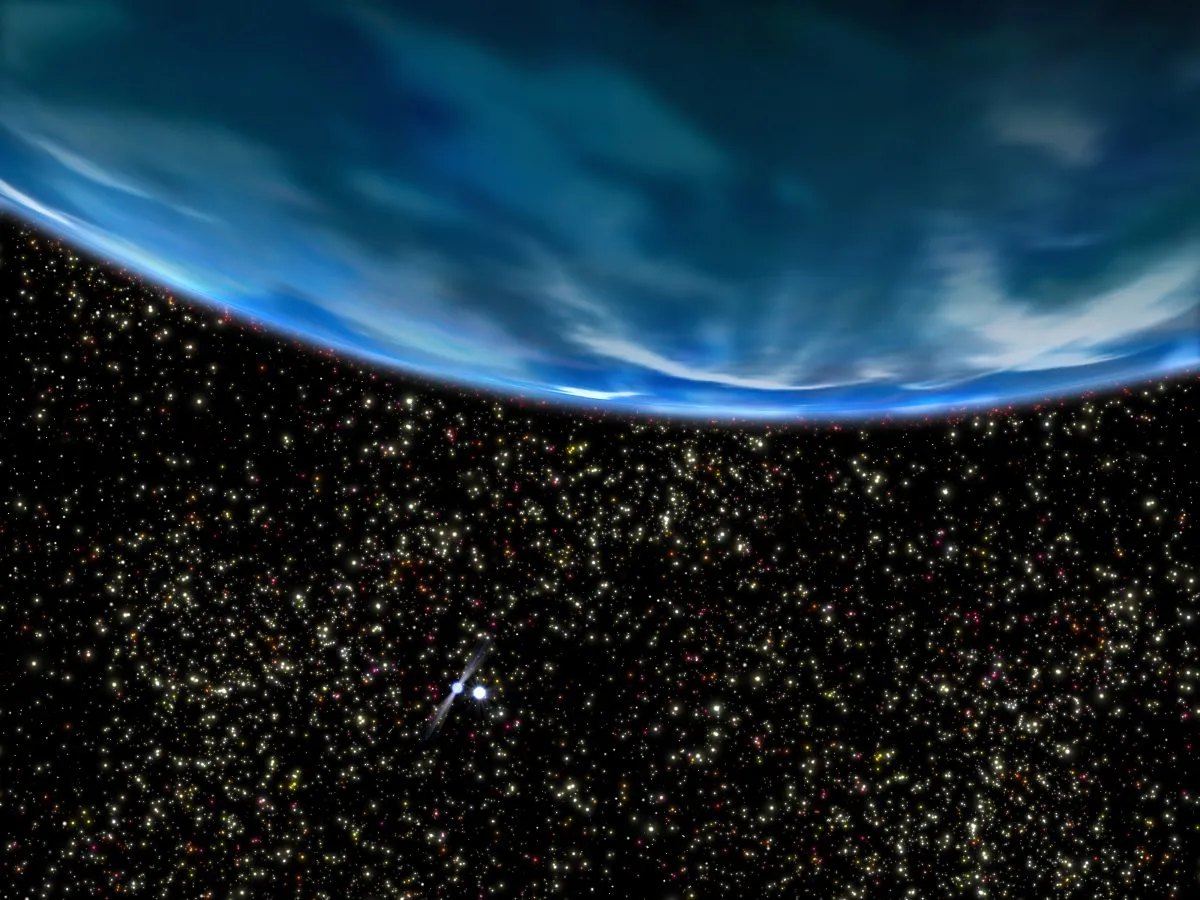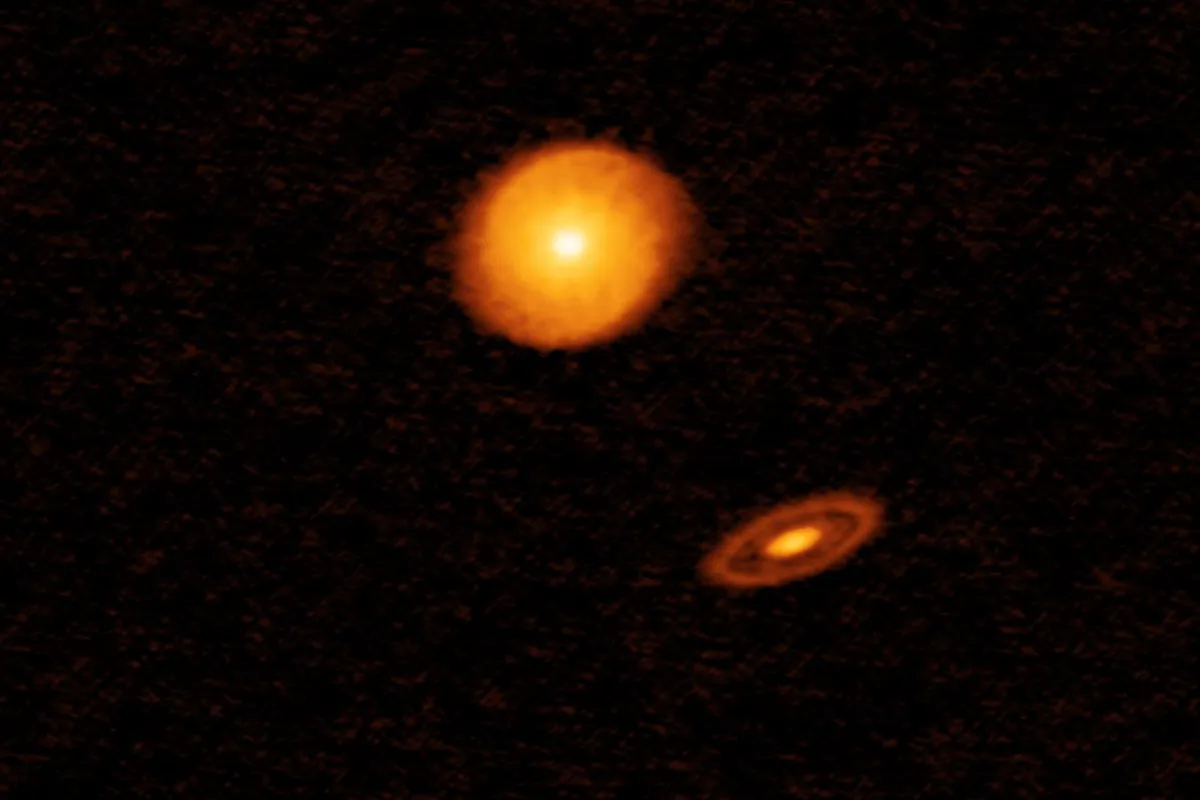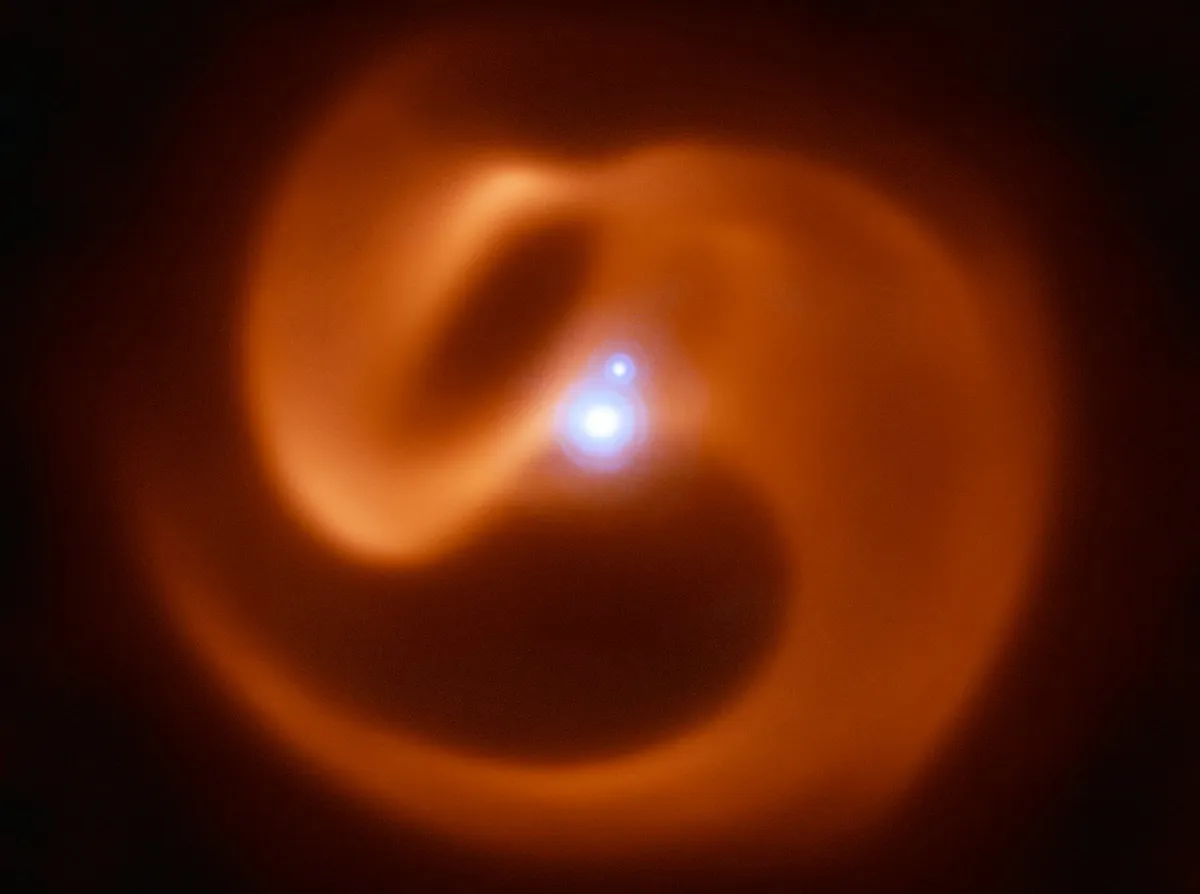While the majority of exoplanets discovered are around single stars, many in our Galaxy are part of binary or multiple systems.
It’s trickier to detect a planet orbiting two stars at once, or even in multiple star systems (for example, the other bound stars completely swamp any sign of a companion planet), but there’s no reason to suppose they’re not pretty common.

How planets orbit two stars at once
There are three different kinds of orbit that a planet in a binary star system can remain stable within.
The first is a ‘satellite-type’ or S-type internal orbit, where the planet circles one of the two stars.
Astronomers have discovered around 50 confirmed exoplanets on S-type orbits, and we know of two systems where both of the binary stars harbour their own planet.
The planet could have a wide, circumbinary orbit around both stars in the middle – what’s known as a ‘planet-type’ or P-type external orbit.

It’s even theoretically possible for a planet to be held within the L4 or L5 Lagrangian equilibrium point, co-orbiting with the smaller star around the larger star, which is comparable to how the Trojan asteroids sit within Jupiter’s Lagrange points in our Solar System.
This third possibility is a special case and is calculated to only be stable when the smaller star is less than 4% the mass of the larger star: a small red dwarf orbiting a blue and white A-class companion for instance.
How planets come to to orbit two stars at once

So what orbital setups of binary stars and a planet can create stable systems?
Roberto Capuzzo-Dolcetta at the University of Rome and Giovanni De Cesare at the Astrophysics and Space Science Observatory of Bologna ran computer simulations to find out.
They modelled more than 10,000 possible systems with different initial conditions – varying the combinations of stellar masses, orbital distance, eccentricity and so on.
They followed the evolving dynamics of the paths of the stars and planet over a long time period (a billion years or more)
They considered the system to be unstable if the planet was lost: either by falling into either of the two stars, or by being gravitationally ejected from the system altogether.
If you want to experiment more with the physics behind these scenarios yourself, you can visit the authors' own real-time exoplanet orbital simulator.
Capuzzo-Dolcetta and De Cesare found that if the configuration was unstable the planet was more likely to collide into the star with the greater mass (and thus the one with the dominant gravitational effect within the system) than the smaller one.

They also determined the edge of the instability zone: how far away from the larger star an S-type orbiting planet was still stable.
They found, for example, that if the companion star were 10% of the larger’s mass, the planet could survive on a wide orbit that reached almost half way across the system without being torn away.
But Capuzzo-Dolcetta and De Cesare also noticed something very interesting.
In many of instances where the planet was torn from its stable orbit around one star before being slung completely out of the system, it first moved on an outer orbit for a while.
This got them thinking; could a planet be nudged out of an S-type orbit around one star and into a stable P-type circumbinary path around both (or visa versa)?
When they ran the numbers they discovered that such an eventuality, although not very probable, was indeed possible.
The finding raises the intriguing chance that somewhere out there right now is a planet hopping orbits.
Prof Lewis Dartnell is an astrobiologist at the University of Westminster. Lewis was reading reading Stability of Planetary Motion in Binary Star Systems by Roberto Capuzzo-Dolcetta, Giovanni De Cesare and Alessio Marino. Read it online at arxiv.org.
